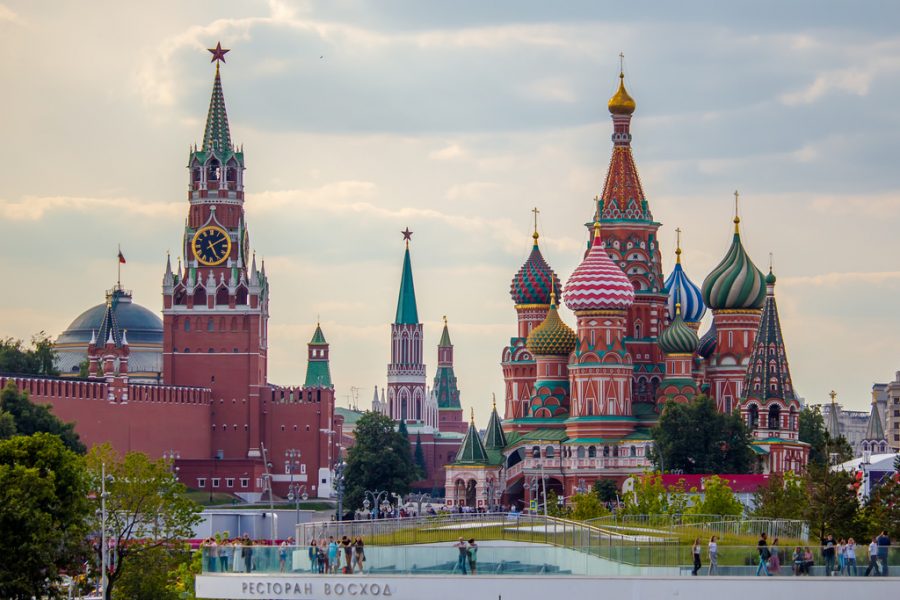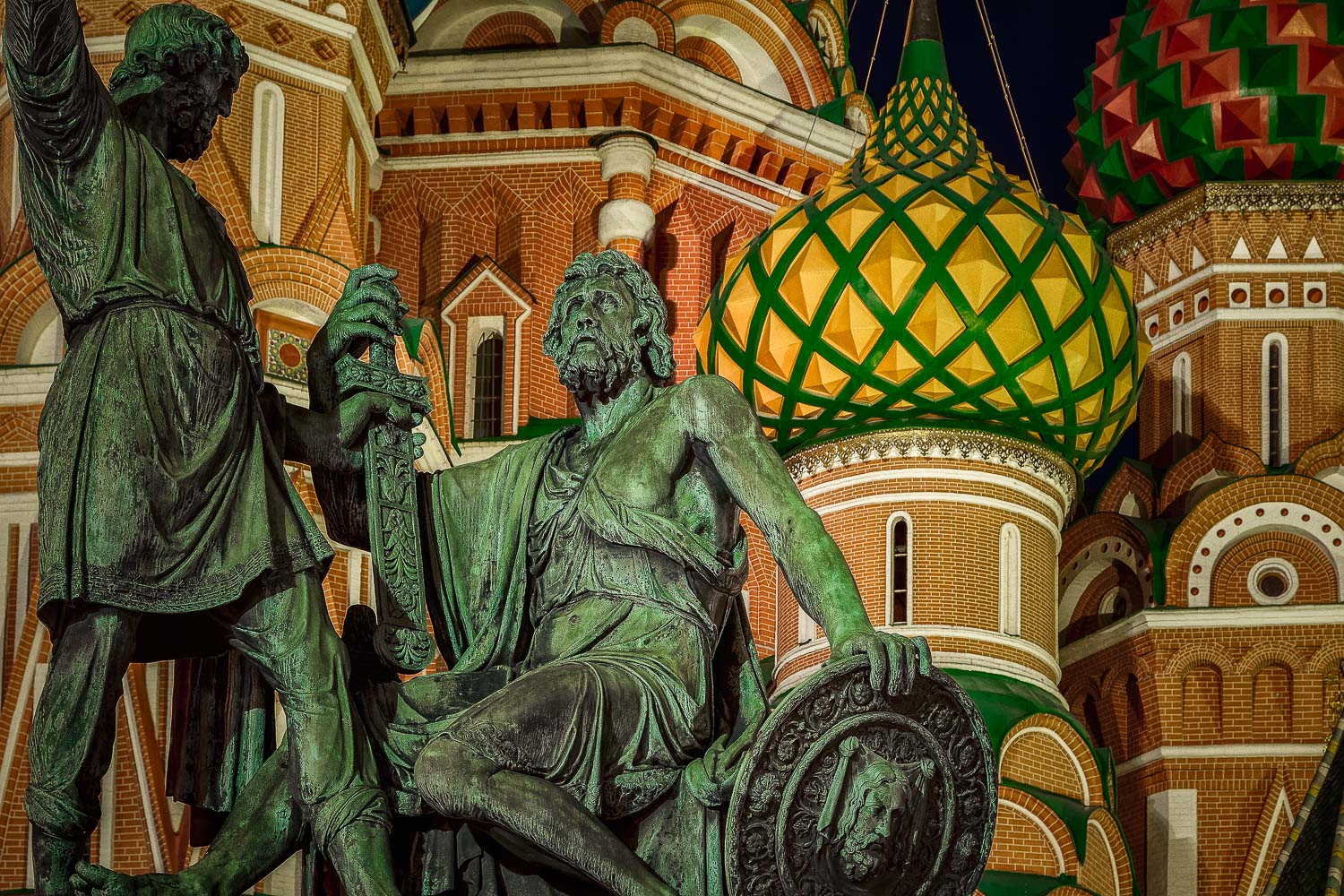St. Basil’s Cathedral stands as a testament to the rich cultural heritage and architectural brilliance that define Moscow. This iconic structure, with its vibrant colors and unique design, is not merely a church; it is a symbol of the resilience and artistic spirit of the Russian people. Nestled in the heart of the city, St. Basil’s Cathedral attracts millions of visitors each year, all drawn by its captivating beauty and historical significance.
Historical Significance of St. Basil’s Cathedral
Exploring the historical context of St. Basil’s Cathedral reveals a deeper understanding of its importance beyond mere aesthetics. Built in the mid-16th century under the reign of Ivan the Terrible, the cathedral was constructed to commemorate the victorious Battle of Kulikovo against the Polish-Lithuanian forces. This pivotal moment in Russian history marked a turning point in the struggle for national identity and sovereignty.
The Battle of Kulikovo and Its Legacy
The Battle of Kulikovo, fought in 1380, was a significant event in the formation of the Russian state. It represented the first major victory over the Mongol-Tatar yoke that had dominated Russia for centuries. The establishment of St. Basil’s Cathedral as a memorial to this victory reflects the intertwining of faith and nationalism, where the church became a beacon of hope, unity, and strength for the Russian people.
This historical backdrop conveys the cathedral’s role in fostering a collective national identity. As visitors stand before St. Basil’s Cathedral, they are reminded of the brave warriors who fought for their homeland and the enduring spirit of a nation that overcame adversity. The structure embodies not just religious devotion but also a celebration of resilience, pride, and cultural heritage.
Architectural Marvel of St. Basil’s Cathedral

One cannot discuss St. Basil’s Cathedral without marveling at its architectural magnificence. Designed by the Italian architect Postnik Yakovlev, the cathedral features a blend of Byzantine and Russian architectural styles, creating a distinctive visual experience. Its nine colorful domes, resembling a bouquet of flowers, are a hallmark of Russian architecture, inviting admiration from all who behold them.
The intricate details of each dome showcase the craftsmanship of the era, with ornate patterns and designs that tell stories of Russian culture. The asymmetrical layout, which diverges from traditional European church designs, reflects the uniqueness of Russian spirituality and artistic expression. Each tower is not just a structural element; it symbolizes various aspects of faith and community, representing different saints and religious themes.
Cultural Symbolism in St. Basil’s Cathedral
Beyond its physical beauty, St. Basil’s Cathedral serves as a canvas for cultural symbolism. The cathedral is often interpreted as a representation of the celestial realm, with its towering spires reaching towards the sky. This connection between earth and heaven underscores the spiritual aspirations of the Russian people, emphasizing the importance of faith in their lives.
Moreover, St. Basil’s Cathedral has become a significant emblem of Moscow itself. The image of the cathedral is often used in literature, art, and media, reinforcing its status as an icon of Russian culture. Tourists and locals alike capture photographs of this magnificent structure, solidifying its place in contemporary consciousness as a symbol of pride and heritage.
Artistic Elements of St. Basil’s Cathedral

The artistic elements embedded within St. Basil’s Cathedral enhance its allure and complexity. From frescoes to mosaics, the interior of the cathedral showcases a wealth of artistic expression that complements its architectural grandeur. Each detail contributes to a cohesive narrative of spirituality, history, and community.
Intricate Frescoes and Mosaics
Upon entering St. Basil’s Cathedral, visitors are greeted by stunning frescoes and mosaics that adorn the walls and ceilings. These artworks depict biblical scenes, saints, and religious icons, inviting contemplation and reverence. The vivid colors and intricate designs transport observers into a world where art converges with spirituality.
The use of light within the cathedral further elevates the artistic experience. Natural light filters through the stained glass windows, casting ethereal patterns upon the stone surfaces. This interplay of light and color creates a dynamic atmosphere, transforming the space throughout the day. Visitors often describe the sensation of being enveloped in a sacred ambiance, where art and faith harmoniously coexist.
Symbolic Imagery in Artworks

The choice of imagery within the frescoes and mosaics carries profound symbolic meaning. The depiction of various saints serves to connect the faithful with the divine, offering inspiration and guidance. Each figure represents different virtues and ideals, reflecting the values cherished by the Russian Orthodox Church.
Additionally, the artistic motifs often draw from traditional Russian folklore and mythology. This blending of religious iconography with indigenous themes illustrates the cultural fabric of Russia, showcasing how faith and tradition are interwoven. Such artistic choices invite deeper exploration of the narratives and beliefs that shaped the nation’s identity.
Preservation of Artistic Heritage
The preservation of St. Basil’s Cathedral as a living work of art is of utmost importance. Over the centuries, restoration efforts have aimed to maintain the integrity of the cathedral while adapting to modern needs. These initiatives not only safeguard the physical structure but also ensure that future generations can continue to experience the artistic and cultural richness embodied within its walls.
As custodians of this heritage, it is crucial to engage in dialogues about the relevance of St. Basil’s Cathedral in contemporary society. How does this historical site resonate with current values and aspirations? Addressing these questions will foster a greater appreciation for the cathedral as both a relic of the past and a source of inspiration for the future.
The Role of St. Basil’s Cathedral in Contemporary Society
In today’s world, St. Basil’s Cathedral holds a multifaceted role that extends far beyond its original function as a place of worship. It has evolved into a cultural landmark, drawing visitors from around the globe and serving as a platform for dialogue between different cultures and traditions. The cathedral’s presence in the public consciousness highlights its ongoing significance in shaping the narrative of Russian identity.
A Hub of Cultural Events

St. Basil’s Cathedral serves as a vibrant hub for various cultural events and festivities. Throughout the year, the square surrounding the cathedral becomes a lively venue for concerts, exhibitions, and celebrations. These gatherings unite people from diverse backgrounds, fostering a sense of community and shared purpose.
Events such as the annual Moscow City Day celebrations transform the area into a festive atmosphere filled with music, food, and performances. This fusion of tradition and modernity invites reflection on the evolution of Russian culture, allowing participants to engage with their heritage while embracing contemporary expressions of creativity.
Educational Opportunities at St. Basil’s Cathedral

Beyond its status as a tourist attraction, St. Basil’s Cathedral offers educational opportunities that promote a deeper understanding of Russian history and culture. Guided tours provide insights into the architectural significance, historical events, and artistic elements of the cathedral, allowing visitors to connect with its rich legacy on a personal level.
Moreover, educational programs and workshops aim to inspire younger generations to appreciate their cultural heritage. By engaging students in discussions about the cathedral’s importance, these initiatives cultivate a sense of pride and responsibility toward preserving and celebrating their cultural identity.
A Symbol of Resilience and Unity

In times of social or political strife, St. Basil’s Cathedral stands as a symbol of resilience and unity for the Russian people. It represents not only the triumphs of the past but also the collective spirit that continues to shape the nation’s future. The cathedral’s enduring presence serves as a reminder of the values that bind communities together—faith, courage, and perseverance.
Through this lens, St. Basil’s Cathedral transcends its physical form, embodying the aspirations of individuals and communities striving for a brighter future. It encourages dialogue about shared values and experiences, fostering connections that reinforce the importance of cultural heritage in navigating contemporary challenges.
Personal Reflections on the Beauty of St. Basil’s Cathedral

As I reflect upon my encounters with St. Basil’s Cathedral, I am struck by its ability to evoke a sense of wonder and curiosity. Each visit unveils new layers of meaning, deepening my appreciation for the intricacies of its design and the narratives embedded within its walls. Gazing at the cathedral’s vibrant domes against the backdrop of Moscow’s skyline ignites a profound sense of connection to the past.
Engaging with the Spiritual Essence
Standing before St. Basil’s Cathedral, I often find myself contemplating the spiritual essence that permeates the space. The silence within the cathedral invites introspection, encouraging moments of reflection amidst the bustling energy of the city. This juxtaposition of tranquility and vibrancy encapsulates the essence of Moscow—a place where history and modern life coexist harmoniously.
The cathedral serves as a sanctuary for those seeking solace and inspiration. As I observe others engaged in prayer or quiet contemplation, I am reminded of the universal human desire for connection to something greater than ourselves. St. Basil’s Cathedral becomes a vessel for spiritual exploration, bridging the gap between the individual and the divine.
Discovering Artistic Expressions

Each visit to St. Basil’s Cathedral unveils new artistic expressions that enrich the overall experience. The interplay of colors, textures, and light captivates my senses, drawing me into a world where artistry transcends time. I often find myself lost in the intricate details of the frescoes, pondering the stories behind each brushstroke.
The emotional resonance of the artwork lingers long after I leave the cathedral. It prompts me to consider the role of art in our lives—how it can communicate complex emotions and ideas that words alone cannot express. St. Basil’s Cathedral stands as a testament to the power of artistic expression in shaping our understanding of culture and identity.
A Lasting Impression

Ultimately, the impression left by St. Basil’s Cathedral is profound and lasting. It serves as a reminder of the beauty that arises from the convergence of history, faith, and artistry. Each encounter with the cathedral reinforces my belief in the importance of preserving cultural heritage, as it enriches our understanding of who we are and where we come from.
As I walk away from St. Basil’s Cathedral, I carry with me not just memories of its architectural splendor but also a renewed commitment to honoring the cultural legacies that shape our world. The cathedral remains etched in my heart, a symbol of resilience and creativity that inspires me to embrace the complexity of human experience.
Conclusion

St. Basil’s Cathedral is more than just a remarkable architectural feat; it is a living embodiment of Russia’s cultural identity, historical significance, and artistic expression. From its origins rooted in a pivotal battle to its current role as a vibrant cultural hub, the cathedral continues to captivate hearts and minds around the globe.
As we navigate the complexities of modern life, St. Basil’s Cathedral serves as a reminder of the enduring power of heritage and the importance of preserving our collective stories. It invites us to celebrate the beauty of diversity, engage in meaningful dialogue, and reaffirm our commitment to nurturing the rich tapestry of human culture.
Indeed, St. Basil’s Cathedral stands as a beacon of hope, inspiring future generations to honor their roots while embracing the possibilities that lie ahead. Through its enchanting presence, we are reminded that the essence of humanity resides in our shared experiences, aspirations, and the stories that connect us all.
✉️ Stay Connected — Subscribe for Weekly Updates
Discover timeless stories, practical wisdom, and beautiful culture — delivered straight to your inbox.
*We only share valuable insights — no spam, ever.






